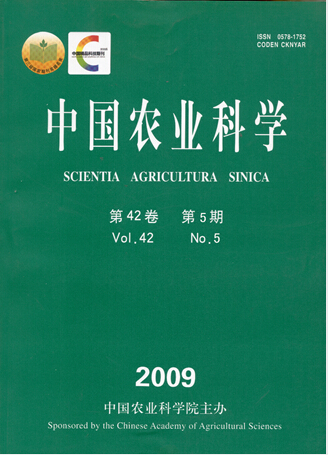【Objective】 The objective of the paper was to study the coupling effect on cotton yield, nitrogen use efficiency (NUE) and water use efficiency (WUE) at different levels of water and nitrogen under different lateral placements. 【Method】 By using the factor of water and nitrogen in different drip irrigation lateral placements that including 1 lateral 4 rows, 2 laterals 4 rows and 2 laterals 6 rows, which using universal design of the second rotation, field experiments were conducted. 【Result】 The result showed that as for the coupling effect of water and nitrogen on cotton yield, that of water was more significant than nitrogen under 1 lateral 4 rows, nitrogen was more significant than water under 2 laterals 4 rows and 2 laterals 6 rows. Cotton yield of three drip irrigation patterns were positive correlated when irrigation water at 65.1-284.9 mm. At a certain level of nitrogen, in 1 lateral 4 rows, a positive correlation between nitrogen and cotton yield when nitrogen was 16.2-94.2 kg?hm-2, in 2 laterals 4, a rows negative correlation when nitrogen was 16.2-69 kg?hm-2and a positive correlation when nitrogen was 69-94.2 kg?hm-2, in 2 laterals 6, a rows positive correlation in 16.2-55.2 kg?hm-2and a negative correlation in 55.2-94.2 kg?hm-2. As for the coupling effect of water and nitrogen on nitrogen use efficiency (NUE), nitrogen was more significant than water under the three drip irrigation patterns. In 1 lateral 4 rows, a negative correlation between NUE when nitrogen was 16.2-82.2 kg?hm-2 and a positive correlation when N was 82.2-94.2 kg?hm-2. In 2 laterals 4 rows, a negative correlation between NUE when nitrogen was 16.2-69.0 kg?hm-2 and a positive correlation whan N was 69.0-94.2kg?hm-2. In 2 laterals 6 rows, a negative correlation between NUE and when applied nitrogen within 16.2-94.2 kg?hm-2. As for the three drip irrigation patterns, a positive correlation between water and NUE when irrigation water was in 65.1-284.9 mm. As for the coupling effect of water and nitrogen on water use efficiency (WUE), water was more significant than nitrogen under 1 lateral 4 rows and 2 laterals 4 rows, nitrogen was more significant than water under 2 laterals 6 rows. In 1 lateral 4 rows, a positive correlation between nitrogen and WUE was found. In 2 laterals 4 rows, a negative correlation in the applied nitrogen of 16.2-41.4 kg?hm-2 and a positive correlation in the applied nitrogen of 44.2-94.2 kg?hm-2 was found, in 2 laterals-6 rows, a positive correlation in the applied nitrogen of 16.2-55.2 kg?hm-2 and a negative correlation in 55.2-94.2 kg?hm-2was found. In three drip irrigation patterns, a negative correlation between water and WUE under the condition of water in 65.1-284.9 mm was found. 【Conclusion】 According to different patterns of drip irrigation water and nitrogen coupling effect, different modes of drip irrigation water and nitrogen management strategy were established with cotton yield, NUE, WUE for the objectives the result showed that 2 laterals 4 rows are most effective in promotion of the coupling effect of water and nitrogen and is conducive to the drip irrigation of cotton fields of water and nitrogen management.









